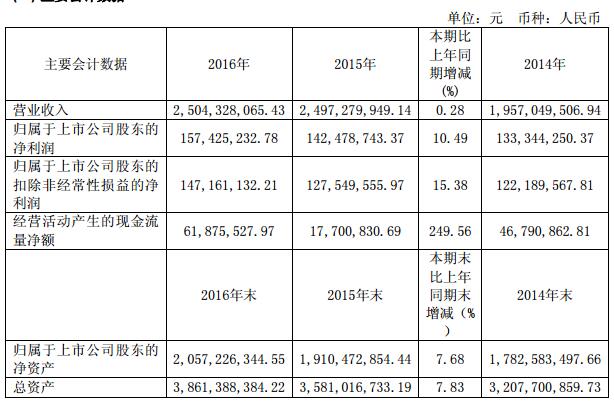On April 11, Lianchuang Optoelectronics (600363) released its 2016 performance report. During the reporting period, its operating income increased by 0.28% year-on-year. The annual operating income was 2.504 billion yuan, of which optoelectronic devices and application products realized operating income. 2.127 billion yuan, accounting for 84.91% of the company's total operating income.

According to the report, Lianchuang Optoelectronics is a key high-tech enterprise of the National Torch Program, a national industrialization base for the “863 Programâ€, a national “indium gallium nitride LED epitaxial wafer, chip industrialization†demonstration project enterprise, and a national TQM advanced unit. The largest growth enterprise in China's semiconductor lighting industry and the core enterprise of Nanchang National Semiconductor Lighting Engineering Industrialization Base.
Lianchuang Optoelectronics Co., Ltd. has established a complete industrial chain from LED chips, devices to backlights, full-color displays, semiconductor lighting sources, etc. At the same time, it is also an established enterprise engaged in wire and cable production earlier in China.
In light of the company's industrial development status, Lianchuang Optoelectronics will further promote the industry's clean-up and integration, focusing on the development direction of key industries such as intelligent control, smart home (lighting), high-end consumer electronics, etc., focus on the advantages of resources, increase investment, and further enlarge and strengthen intelligence. Control modules, high-end LDE backlights and displays, military electronics, special cables and other business segments, to promote the upgrading of existing product business, accelerate the elimination and exit of existing backward industrial products.
In recent years, the large-scale expansion of the LED industry has led to overcapacity, product prices have continued to fall, and industry competition has entered a white-hot state. After experiencing the “big reshuffle†of the industry in 2015, the company has gradually withdrawn from the market with low-end backward production capacity. LED industry concentration has been improved. In 2016, some foreign upstream manufacturers contracted production lines, overcapacity was alleviated, and LED chip and package prices began to bottom out.
At the same time, with the full rollout of the “ban†in October 1, 2016, the market demand for LED downstream lamps is further released. The upstream and downstream supply and demand of the LED industry chain are not matched. The price rises from chip, package and extends to the terminal. In the product field, the overall industry boom has rebounded and is expected to usher in a new round of growth.
Throughout 2016, the LED industry has the following four characteristics:
1. The price increase of materials has led to the first price increase of LED products in recent years.
Under the leadership of Jingdian and Sanan, LED chips took the lead to increase prices by about 10%. Subsequently, Mulinsen, Cinda Optoelectronics and Guoxing Optoelectronics also raised the price of some lamps. The price hike started in 2016 ended with the price war of LED products that sacrificed market share by sacrificing quality and profit, and forced the industry to return to rationality to a certain extent.
2. The capacity expansion of the chip is slowing down, and the package concentration is further improved.
Foreign LED chip manufacturers have cut production, and affected by the government supply side reform, the government subsidies for the chip end are gradually reduced, which has led to a slowdown in chip capacity expansion. At the same time, after the industrial deep reshuffle in 2015, a large number of low-end backward production enterprises have withdrawn from the market, and industrial concentration has been improved.
3. The export market is uneven and the Middle East market is booming.
The EU, the United States, Japan, ASEAN countries, BRICS countries and Middle East countries are the main markets for China's LED lighting products exports in 2016. The US market maintained growth but the growth rate slowed down, and the market share expanded by 4 percentage points over the same period in 2015.
The Middle East market has risen rapidly with a growth rate of up to 27% and a market share of 7%, an increase of 2 percentage points over the same period last year.
While the Russian market has fallen sharply, the market share of BRICS countries has shrunk from 7% in the same period in 2015 to 6%, and exports to Japan have fallen sharply, down 17% from the same period in 2015.
4, industry reshuffle accelerates, mergers and acquisitions integration continues to stage.
In 2016, there were about 40 domestic M&A events in the LED industry, and the M&A amount exceeded 30 billion yuan, mainly for internal integration.
At the same time, international lighting giants have shrunk the front line in order to "self-protection". China's overseas M&A transactions have been frequent. Mulinsen teamed up with IDG to invest 400 million euros to acquire OSRAM lighting business. The global LED industry focus is closer to China.
In 2017, the global LED industry is expected to usher in a new round of growth, the relationship between industrial supply and demand will be further improved, and industrial development will be more rational. At the same time, industry reshuffle will be further intensified, and LED companies will either move toward scale or differentiate into special applications.

Photography Accessories,Camera Flash Diffuser,Lantern Softbox Diffuser,Photography Light Diffuser
SHAOXING SHANGYU FEIXIANG PHOTOGRAPHIC CO.,LTD , https://www.flying-photography.com